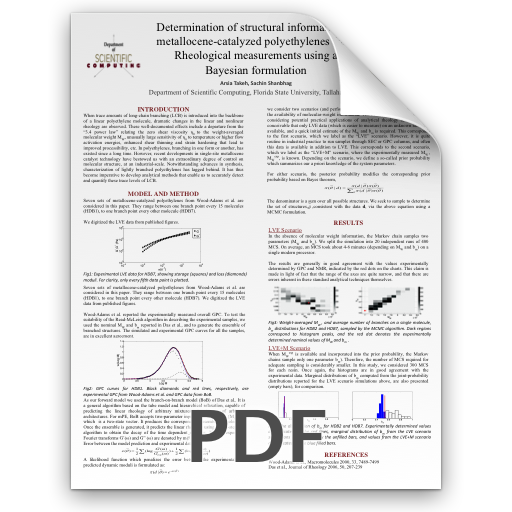
Determination of structural information of metallocene-catalyzed polyethylenes from Rheological measurements using a Bayesian formulation
Introduction
When trace amounts of long-chain branching (LCB) is introduced into the backbone of a linear polyethylene molecule, dramatic changes in the linear and nonlinear rheology are observed. These well-documented effects include a departure from the “3.4 power law” relating the zero shear viscosity η0 to the weight-averaged molecular weight MW, unusually large sensitivity of η0 to temperature or higher flow activation energies, enhanced shear thinning and strain hardening that lead to improved processibility, etc. In polyethylenes, branching in one form or another, has existed since a long time. However, recent developments in single-site metallocene catalyst technology have bestowed us with an extraordinary degree of control on molecular structure, at an industrial-scale. Notwithstanding advances in synthesis, characterization of lightly branched polyethylenes has lagged behind. It has thus become imperative to develop analytical methods that enable us to accurately detect and quantify these trace levels of LCB.

